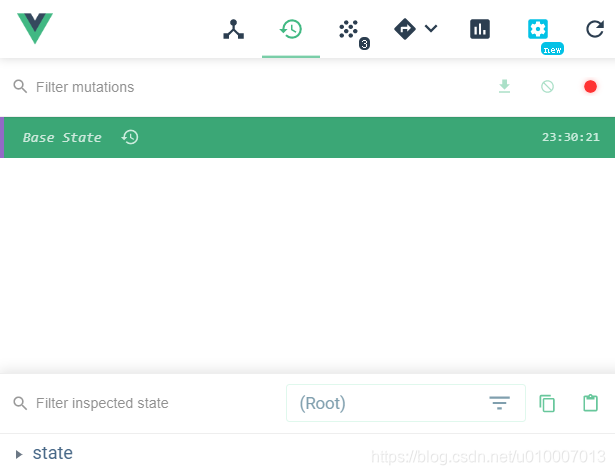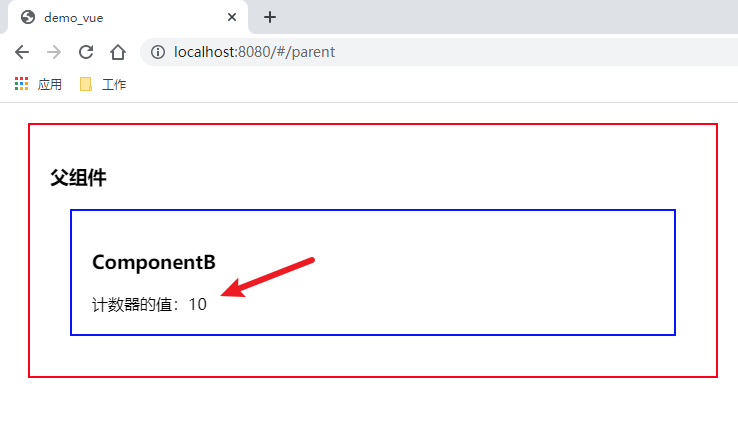vuex修改状态state方法
vuex想要改变state里的属性,官方推荐的方法是通过mutaion的方式修改state。
例如:
store.js
const state = {
num:0
}
const mutations = {
SET_NUM(state, payload) {
state.num= payload;
},
}
export default new Vuex.Store({
state,
mutations
})
...
export default{
data(){
return{
num:1
}
},
methods:{
doSomething(){
this.$store.commit('SET_NUM',this.num);
}
}
}
在组件里直接修改state也是生效的,例如:
doSomething(){
this.$store.state.num = this.num;
}
但是不推荐这种直接修改state的方式,因为这样不能使用vuex的浏览器插件来跟踪状态的变化,不利于调试。

vuex state使用/教程/实例
说明
- 本文用示例介绍Vuex的五大核心之一:state。
官网
state概述
单一状态树
- Vuex 使用单一状态树:用一个对象就包含了全部的应用层级状态。它作为一个“唯一数据源。这也意味着,每个应用将仅仅包含一个 store 实例。
- 单一状态树让我们能够直接地定位任一特定的状态片段,在调试的过程中也能轻易地取得整个当前应用状态的快照。
- 存储在 Vuex 中的数据和 Vue 实例中的 data 遵循相同的规则,例如状态对象必须是纯粹 (plain) 的。
响应式
state存放的数据是响应式的:如果store的数据改变,依赖这个数据的组件也会更新。
用法
直接使用
// 在JS中使用 this.$store.state.变量名 // 不分模块 this.$store.state.模块名.变量名 // 分模块//在模板上使用 $store.state.变量名 // 不分模块 $store.state.模块名.变量名 // 分模块
mapState
import { mapState } from 'vuex'
export default {
computed: {
...mapState(['state属性名']) // 不分模块,不修改属性名
...mapState({'新属性名称':'state属性名'}) // 不分模块,修改属性名
...mapState('模块名', ['state属性名']) // 分模块,不修改属性名
}
}
示例
代码
CouterStore.js
import Vue from 'vue';
import Vuex from 'vuex';Vue.use(Vuex);
const counterStore = new Vuex.Store(
{
state: {
count: 10
},
}
);export default counterStore;
Parent.vue
import ComponentB from "./ComponentB";export default { name: 'Parent', components: {ComponentB}, } .outer { margin: 20px; border: 2px solid red; padding: 20px; }父组件
ComponentB.vue(组件)
export default { computed:{ thisCount() { return this.$store.state.count; } } } .container { margin: 20px; border: 2px solid blue; padding: 20px; }ComponentB
计数器的值:{{thisCount}}
路由(router/index.js)
import Vue from 'vue'
import Router from 'vue-router'
import Parent from "../components/Parent";Vue.use(Router)export default new Router({
routes: [
{
path: '/parent',
name: 'Parent',
component: Parent,
}
],
})
测试
访问:http://localhost:8080/#/parent

总结
以上为个人经验,希望能给大家一个参考,也希望大家多多支持IT俱乐部。

